Chapter 1. An Introduction to Sociology
1.2. The History of Sociology

Since ancient times, people have been fascinated by the relationship between individuals and the societies to which they belong. The ancient Greeks might be said to have provided the foundations of sociology through the distinction they drew between physis (nature) and nomos (law or custom). The modern sociological term “norm” (i.e., a social rule that regulates human behaviour) comes from the Greek term nomos. Histories by Herodotus (484–425 BCE) was a proto-anthropological work that described the great variations in the nomos of different ancient societies around the Mediterranean, indicating that human social life was not a product of nature but a product of human creation. In the 13th century, Ma Tuan-Lin, a Chinese historian, first recognized social dynamics as an underlying component of historical development in his seminal encyclopedia, General Study of Literary Remains. The study charted the historical development of Chinese state administration from antiquity in a manner very similar to contemporary institutional analyses.
However, it was not until the 19th century that the basis of the modern discipline of sociology can be said to have been truly established. The ideas that culminated in sociology can be found in the three major transformations that came to define modern society: the development of science from the 16th century onward, the emergence of democratic forms of government with the American and French Revolutions (1775–1783 and 1789–1799 respectively), and the Industrial Revolution beginning in the 18th century. This was a time of great hope in a scientific understanding of world through systematic observation, of popular uprisings that upended forms of governance based on claims of divine inheritance, and of unprecedented social problems, from the breakdown of local communities to the hyper-exploitation of industrial labourers.
Early sociologists like Comte and Marx sought to formulate a rational, evidence-based, scientific explanation of this tumultuous time. While Comte hoped to restore order and Marx sought to provide the basis for a revolutionary transformation, each argued that sociology, by providing a rational and scientifically comprehensive knowledge of society and its processes, could help build a better world. This is why to the day sociology can be understood as a fundamentally hopeful endeavour.
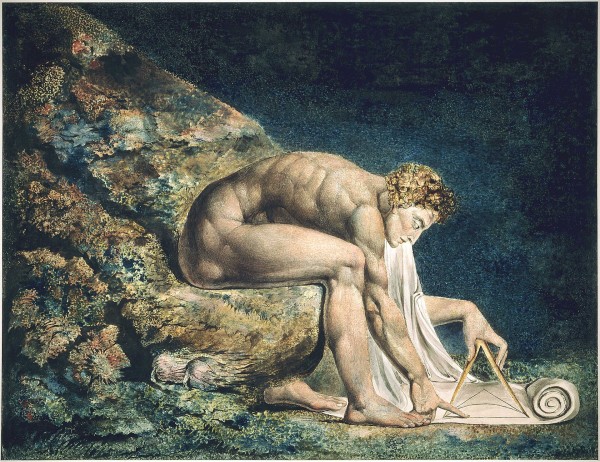
August Comte: The Father of Sociology
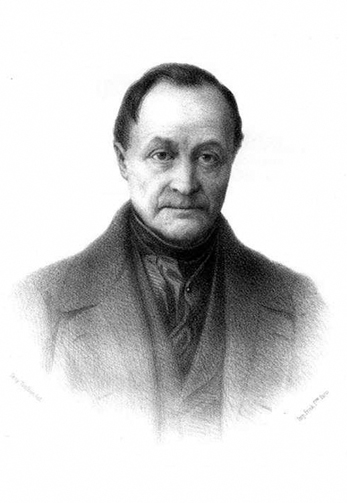
The term sociology was first coined in 1780 by the French essayist Emmanuel-Joseph Sieyès (1748–1836) and in 1838, the term was reinvented by Auguste Comte (1798–1857). Comte believed that societies and human behaviour were best understood using the same scientific methods used to study the natural world. He also believed in the potential of social scientists to work toward the betterment of society and coined the slogan “order and progress” to argue that the opposing progressive and conservative factions that marked post-revolutionary French society could be united. Comte proposed that science would be the means to create a rational social order where each social group could find their place in a hierarchical social order. It is a testament to his influence in the 19th century that the phrase “order and progress” adorns the Brazilian coat of arms (Collins and Makowsky, 1989).
Comte named the scientific study of social patterns positivism. He believed that using scientific methods to reveal the laws by which societies and individuals interact would usher in a new “positivist” age of history. In principle, positivism, or what Comte called “social physics,” proposed that the study of society could be conducted in the same way that the natural sciences approach the natural world.
Karl Marx: The Ruthless Critique of Everything Existing
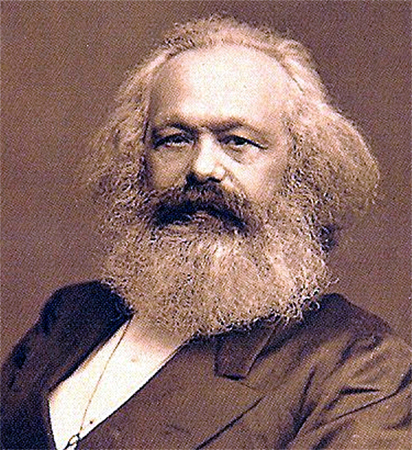
Karl Marx (1818–1883) was a German philosopher and economist but not in the way that most of the time or today would conceive of this. Marx is best known for his critical analysis of capitalist economies and as a revolutionary who, along with his lifelong collaborator, Friedrich Engels (1820–1895) co-authored the Communist Manifesto — one of the most influential political manuscripts in history.
Although Marx never called his analysis “sociology”, much of Marx’s work contained the hallmarks of a sociological imagination. Marx was driven to connect the ‘private troubles’ he and Engels saw around him with the ‘social issues’ of the capitalist economic system that had come to prominence in Europe. His goal was a scientific analysis of society rooted in objective data and understanding and support of struggles for social justice. This work is foundational for contemporary critical sociology that seeks to use a rigorous scientific analysis of society as a basis to change it.
Marx developed a sophisticated political economy that revealed the social relationships, and inequalities, built into capitalist economies. Capitalism, Marx argued, is a class system where the ownership of the “means of production”, the factories, raw materials and tools used in production, gave the ‘bourgeoisie’ not only economic but political and cultural power. Marx described capitalism as inherently dynamic, and driven to technological change and globalization upending all other forms of production and continually reinventing itself and the products it creates.
The conditions of work under capitalism was a driving concern for Marx. He coined the term ‘alienation’ to describe how it was owners that got to decide what, when and how to produce and that at the end of the day the products of workers labour were sold for a profit that owners got to keep. Increasingly work was highly specialized and workers became lowly-paid, appendages to the machines they kept. It is important to remember that Capitalists didn’t lower wages or degrade workers because they were mean or cruel, they were simply following their interests in creating profit.
Finally, Marx sought to understand the potential and source of social change to a form of production and society that might better meet the needs and better develop the potential of all. Marx saw the tensions of capitalism where a small minority grew wealthy at the expense of the masses as ripe for revolutionary change and that movements of alienated workers were likely to be the drivers of this change. This is the least developed aspect of Marx’s writings and he said little about real word “communism” or “socialism” that political movements established in his name afterwards. From the Manifesto and other writings, we can say that Marx envisioned a society where the tremendous technological abilities developed under Capitalism could be redirected from the production of commodities for profit to the well-being of all.
Harriet Martineau: The First Woman Sociologist?

Harriet Martineau (1802–1876) was one of the first women sociologists in the 19th century. There are a number of other women who might compete with her for the title of the first woman sociologist, such as Catherine Macaulay, Mary Wollstonecraft, Flora Tristan, and Beatrice Webb, but Martineau’s specifically sociological credentials are strong. She was for a long time known principally for her English translation of Comte’s Course in Positive Philosophy, but she also created a body of her own work in the tradition of the great social reform movements of the 19th century. Martineau introduced a sorely missing woman’s perspective and tackled issues such as domestic life, children and race relations that her male colleagues neglected. In so doing, Martineau and became a founder of a feminist sociology that shares with critical sociology the view that rigorous social science can, and should, be used to change society.
In two of her most famous sociological works: Society in America (1837) and Retrospect of Western Travel (1838), Martineau found the workings of capitalism at odds with the professed moral principles of people in the United States; she pointed out the faults with the free enterprise system in which workers were exploited and impoverished while business owners became wealthy. She further noted that the belief in all being created equal was inconsistent with the lack of women’s rights. Much like Mary Wollstonecraft, Martineau was often discounted in her own time by the male domination of academic sociology. In the critical tradition, however, she was not interested in merely developing sociology as a social science and actively worked with abolitionists on the social reform of slavery (Zeitlin, 1997), for social reform in the situation of women (the right to vote, have an education, pursue an occupation, and enjoy the same legal rights as men) and together with Florence Nightingale, she worked on the development of public health care, which led to early formulations of the welfare system in Britain (McDonald, 1998).
Émile Durkheim: The Pathologies of the Social Order
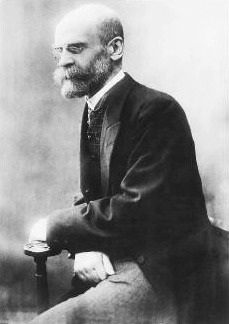
Émile Durkheim (1858–1917) helped establish sociology as a formal academic discipline by establishing the first European department of sociology at the University of Bordeaux in 1895, and by publishing his Rules of the Sociological Method in 1895. As in Comte’s time, France in the late 19th century was the site of major upheavals, sharp and often bloody political divisions and rapid social chainge. This undoubtedly led to the focus in Durkheim’s sociology on themes of moral anarchy, decadence, disunity, and disorganization. For Durkheim, sociology was a scientific but also a “moral calling” and one of the central tasks of the sociologist was to determine “the causes of the general temporary maladjustment being undergone by European societies and remedies which may relieve it” (1897/1951). In this respect, Durkheim represented the sociologist as a kind of medical doctor, studying social pathologies and proposing social remedies and cures. He saw healthy societies as stable, while pathological societies experienced a breakdown in social norms between individuals and society. He described this breakdown as a state of normlessness or anomie — a lack of norms that give clear direction and purpose to individual actions. As he put it, anomie was the result of “society’s insufficient presence in individuals” (1897/1951).
Key to Durkheim’s approach was the analysis of social facts and social functions. Social facts are societal phenomenon like law, custom, morality, religious rites, language, money, business practices, etc.. Each identifiable social fact could be analyzed with regard to its specific function in a society. Like a body in which each organ (heart, liver, brain, etc.) serves a particular function in maintaining the body’s life processes, a healthy society depends on particular functions or needs being met by particular social facts. Along with Compte and Herbert Spencer, Durkheim is said to be a founder of structural functionalism, also called functionalist sociology.
Making Connections: Sociology in the Real World
Durkheim and the Sociological Study of Suicide

Durkheim was very influential in defining the subject matter of the new discipline of sociology. For Durkheim, sociology was not about just any phenomena, it was not about the biological or psychological dynamics of human life, but about the external social facts through which the lives of individuals were constrained. Such a sociology explained how phenomenon that may seem deeply personal are influenced by the societal structures and cultural constraints of individual lives.
This is the framework of Durkheim’s famous study, Suicide: A Study in Sociology (1897/1997). Using statistics compiled by police and other state agencies across Europe, Durkheim observed that while there was no correlation between rates of suicide and rates of psychopathology, suicide rates did vary by social context. For example, suicide rates varied according to the religious affiliation of suicides. Protestants had higher rates of suicide than Catholics, even though both religions equally condemn suicide. In some jurisdictions Protestants killed themselves 300% more often than Catholics. Jews meanwhile were even less likely than Catholics to commit suicide.
Durkheim argued that the key factor that explained the difference in suicide rates were the different degrees of social integration of the different religious communities, measured by the degree of authority religious beliefs hold over individuals, and the amount of collective ritual observance and mutual involvement individuals engage in in religious practice. In short, the more a religion created shared experiences and beliefs that bound people together, the less likely members of that religion were to commit suicide.
Durkheim noted that Catholicism included shared, public ritual practice of the sacraments, such as confession and taking communion and fostered a strong adherence to religious authority. Protestants meanwhile were taught to take a critical attitude to religious authority and formal doctrine and shared ritual was reduced to a minimum. They were less integrated into their communities and more thrown back on their own resources. Protestants were more prone to what Durkheim termed egoistic suicide: suicide which results from individuals having to depend on themselves in the absence of strong social bonds tying them to a community. Suicide, Durkeim wrote, “varies inversely with the degree of integration of the social groups of which the individual forms a part” (Durkheim, 1897/1997).
Here the situation of Jews is instructive. It seems paradoxical that a group, which faced the significant discrimination and hardship of antisemitism would also have low suicide rates. Durkheim’s explanation was that, such threat, encourages unity and the creation strong intra-community ties, ties that protect individuals from violence, provide economic and cultural opportunity and coincidentally provide the social integration that reduces the risk of egoistic suicide. Durkheim’s study was sociological because he did not try to explain suicide rates in terms of individual psychopathology. Instead, he argued that “Suicide varies inversely with the degree of integration of the social groups of which the individual forms a part” (Durkheim, 1897/1997).
Durkheim looked at several other variables such as sex, nationality and marital status and while the passage of time, and the quality of the data available in his day, mean that we cannot simply rely on his findings directly, contemporary research into suicide in Canada shows that suicide rates continue to vary considerably by age, gender and marital status. Males are considerably more likely to commit suicide across all age groups. It is elderly men, however, that have the highest rate of suicide and this is followed by those in middle age. Those under 14 years of age and even those 15 to 19 years of age have lower rates of suicide than all other age groups. On the other hand, married people are the least likely group to commit suicide. Single, never-married people are 3.3 times more likely to commit suicide than married people, followed by widowed and divorced individuals respectively.
How do sociologists explain this? It is clear that early adulthood is a period in which social ties to family and society are strained. It is often a period in which young adults break away from their childhood roles in the family group and establish their independence by going off to college or university. Youth unemployment meanwhile is higher than for other age groups and, since the 1960s. These factors tend to decrease the quantity and the intensity of ties to society. Married people on the other hand have both strong affective affinities with their marriage partners and strong social expectations placed on them, especially if they have families: their roles are clear and the norms which guide them are well-defined. According to Durkheim’s proposition, suicide rates vary inversely with the degree of integration of social groups. Young adults are less integrated into society, which puts them at a higher risk for suicide than married people who are more integrated. It is interesting that the highest rates of suicide in Canada are for adults in midlife, aged 40-59. Midlife is also a time noted for crises of identity, but perhaps more significantly, as Navaneelan (2012) argues, suicide in this age group results from marital breakdown. This is also a time when children are leaving the household an act that leaves both child and parent with lessened social ties and commitments.
Max Weber: Verstehende Soziologie
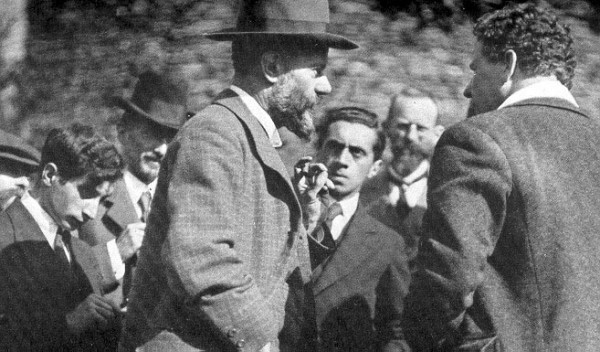
Prominent sociologist Max Weber (1864–1920) established a sociology department in Germany at the Ludwig Maximilians University of Munich in 1919 and was also a prominent public figure, playing an important role in the German peace delegation in Versailles and in drafting the ill-fated German (Weimar) constitution following the defeat of Germany in World War I.
Weber also made a major contribution to the methodology of sociological research. Weber believed that it was difficult if not impossible to apply natural science methods to accurately predict the behaviour of groups as positivist sociology hoped to do. What was distinct about human behaviour was that it could not be understood independently of the meanings that individuals attributed to it. A Martian’s analysis of the activities in a skateboard park would be hopelessly confused unless it understood that the skateboarders were motivated by the excitement of taking risks and the pleasure in developing skills. This insight into the meaningful nature of human behaviour even applied to the sociologists themselves, who, they believed, should be aware of how their own cultural biases could influence their research. To deal with this problem, Weber introduced the concept of Verstehen, a German word that means to understand from a subject’s point of view. In seeking Verstehen, outside observers of a social world — an entire culture or a small setting — attempt to understand it empathetically from an insider’s point of view. The actions of the young skateboarders can be explained because they hold the experienced boarders in esteem and attempt to emulate their skills, even if it means scraping their bodies on hard concrete from time to time.
Weber and other like-minded sociologists founded interpretive sociology whereby social researchers strive to find systematic means to interpret and describe the subjective meanings behind social processes, cultural norms, and societal values an approach later developed as symbolic interactionism or simply interactionism. This approach led to research methods like ethnography, participant observation, and phenomenological analysis. Their aim was not to generalize or predict (as in positivistic social science), but to systematically gain an in-depth understanding of social worlds. The natural sciences may be precise, but from the interpretive sociology point of view their methods confine them to study only the external characteristics of things.
Media Attributions
- Figure 1.6a The “School of Athens” by Raffaello Sanzio (1509), via Wikimedia Commons, is in the public domain.
- Figure 1.6b Bust of Herodotus by Manikantesh Doradla, via Wikimedia Commons, is used under a CC BY-SA 4.0 licence.
- Figure 1.6c Ma Duanlin [still frame image] by Century Old, via YouTube, is used under Fair Dealing provisions in the Canadian Copyright Act.
- Figure 1.6d Ibn Khaldun by Waqas Ahmed, via Wikimedia Commons, is used under a CC BY-SA 3.0 licence.
- Figure 1.6e Portrait of Charles de Secondat, Baron de Montesquieu (1689-1755) by unknown, via Wikimedia Commons, is in the public domain.
- Figure 1.7 Newton-WilliamBlake from the William Blake Archive, via Wikipedia is in the public domain.
- Figure 1.8 Auguste Comte (1851), by Johan Hendrick Hoffmeister (1823-1904), from AugusteCompte.org Museum, via Wikimedia Commons, is in the public domain.
- Figure 1.9 Karl Marx John Mayall, via Wikimedia Commons, is in the public domain.
- Figure 1.10 Harriet Martineau by Richard Evans, National Portrait Gallery: NPG 1085, via Wikimedia Commons is in the public domain.
- Figure 1.11 Émile Durkheim-vignette-png-9 by verapatricia_28 [uploader], via Wikimedia Commons, is used under a CC BY SA 4.0 licence.
- Figure 1.12 Chalice Silver with gilding depicting a youthful Christ with cruciform halo and saints Byzantine by Mary Harrsch, via Flickr, is used under a CC BY-NC-SA 2.0 license.
- Figure 1.13 Max Weber 1917 by unknown photographer [uploaded by Guttorm Flatabø], via Flickr is used under a CC BY 2.0 licence.
- Figure 1.14 Georg Simmel by Julius Cornelius Schaarwächter, via Wikimedia Commons, is in the public domain.

